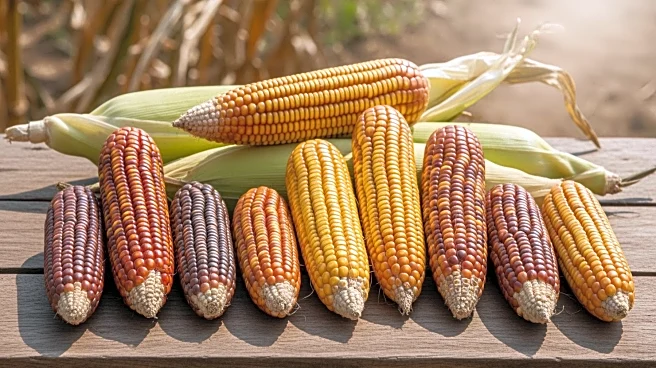What's Happening?
Agronomists across the U.S. Corn Belt have reported highly variable corn yields for October, influenced by a combination of weather conditions and disease pressures. According to agronomists from Syngenta Crop Protection and Iowa State University, the variability
in yields is attributed to factors such as early excessive rains, subsequent drought conditions, and disease outbreaks like southern rust. In Wisconsin, yields ranged from record highs in some areas to below average in others, with disease pressure and mycotoxin levels affecting outcomes. In Minnesota and Illinois, similar variability was noted, with some areas achieving high yields due to effective crop management, while others suffered from poor soil conditions and adverse weather. The U.S. Drought Monitor indicates that the High Plains region remains the least affected by drought, contrasting with the more impacted Midwest areas.
Why It's Important?
The variability in corn yields has significant implications for the agricultural sector and broader economic conditions. Corn is a major crop in the U.S., and fluctuations in yield can affect commodity prices, farm incomes, and supply chains. The reported variability highlights the challenges farmers face in managing crops under changing climate conditions, which can lead to increased costs for disease management and crop insurance. Additionally, the impact on yields could influence food prices and availability, affecting both domestic and international markets. The situation underscores the need for adaptive agricultural practices and policies to mitigate the effects of climate variability on crop production.
What's Next?
As the harvest season concludes, attention will turn to analyzing the full impact of the variable yields on the agricultural economy. Farmers and agronomists will likely focus on strategies to improve resilience against weather extremes and disease pressures. This may include investing in disease-resistant crop varieties and enhancing soil health management practices. Policymakers and agricultural organizations may also consider providing additional support and resources to farmers affected by the adverse conditions. The ongoing monitoring of drought conditions and their impact on future planting seasons will be crucial in planning for the next agricultural cycle.















